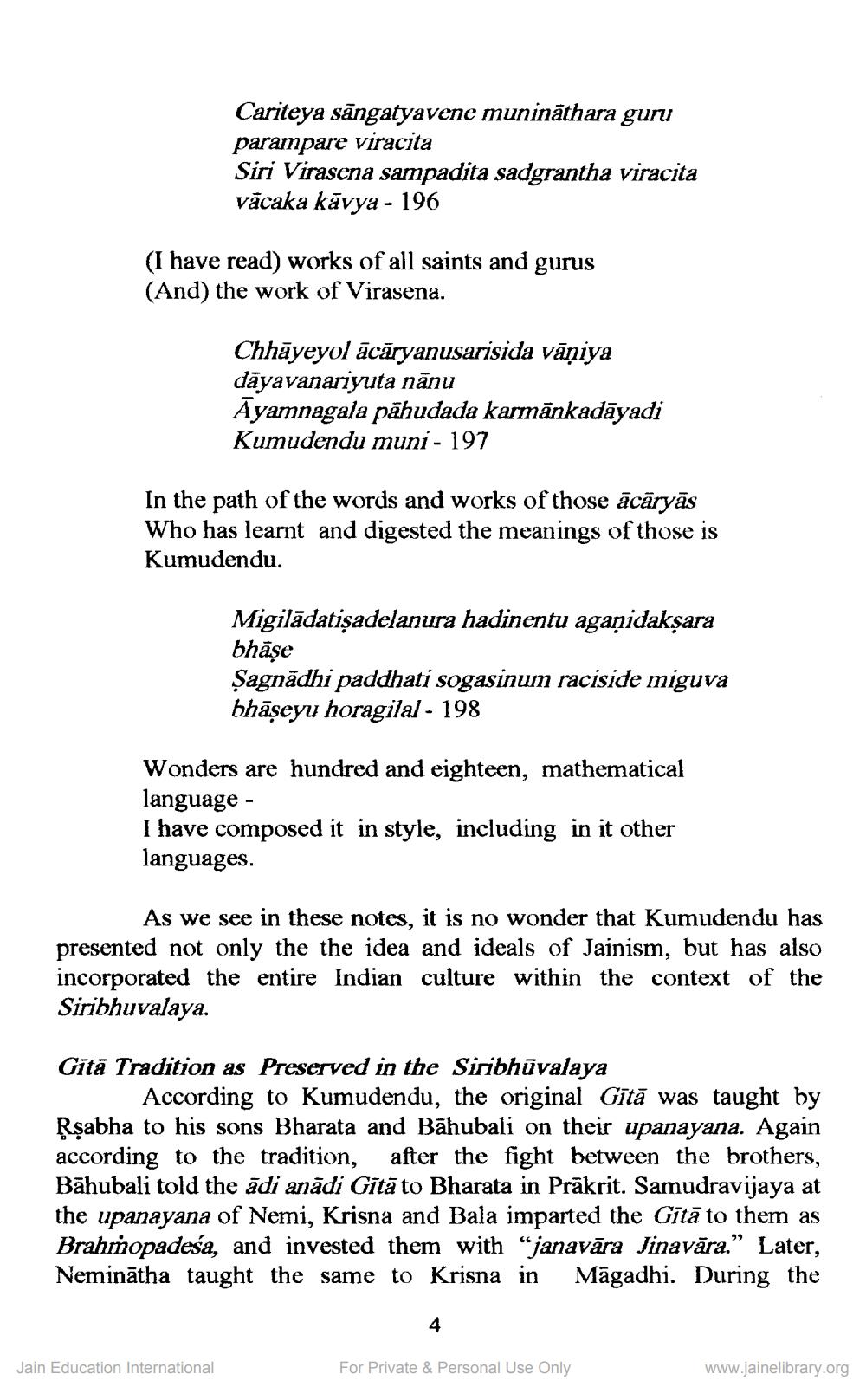Book Title: Jinamanjari 1999 09 No 20 Author(s): Jinamanjari Publisher: Canada Bramhi Jain Society Publication View full book textPage 9
________________ Cariteya sāngatyavene munināthara guru parampare viracita Siri Virasena sampadita sadgrantha viracita vācaka kāvya - 196 (I have read) works of all saints and gurus (And) the work of Virasena. Chhāyeyol ācāryanusarisida vāniya dāyavanariyuta nānu Ayamnagala pähudada karmānkadāyadi Kumudendu muni - 197 In the path of the words and works of those ācāryās Who has learnt and digested the meanings of those is Kumudendu. Migilādatişadelanura hadinentu aganidakşara bhāşe Şagnādhi paddhati sogasinum raciside miguva bhāṣeyu horagilal - 198 Wonders are hundred and eighteen, mathematical language - I have composed it in style, including in it other languages. As we see in these notes, it is no wonder that Kumudendu has presented not only the the idea and ideals of Jainism, but has also incorporated the entire Indian culture within the context of the Siribhuvalaya. Gītā Tradition as Preserved in the Siribhūvalaya According to Kumudendu, the original Gītā was taught by Rşabha to his sons Bharata and Bāhubali on their upanayana. Again according to the tradition, after the fight between the brothers, Bāhubali told the adi anādi Gītā to Bharata in Prākrit. Samudravijaya at the upanayana of Nemi, Krisna and Bala imparted the Gītā to them as Brahropadeśa, and invested them with “janavāra Jinavāra.” Later, Neminātha taught the same to Krisna in Māgadhi. During the Jain Education International For Private & Personal Use Only www.jainelibrary.orgPage Navigation
1 ... 7 8 9 10 11 12 13 14 15 16 17 18 19 20 21 22 23 24 25 26 27 28 29 30 31 32 33 34 35 36 37 38 39 40 41 42 43 44 45 46 47 48 49 50 51 52 53 54 55 56 57 58 59 60 61 62 63 64 65 66 67 68 69 70 71 72 73 74 75 76 77 78 79 80
